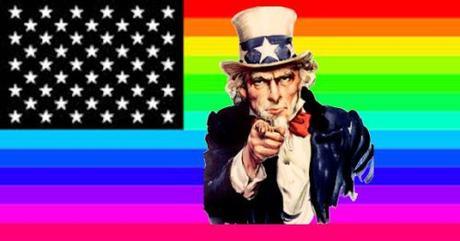You WILL accept and comply.

Via Daily Caller: By fall 2017 Washington state public schools will begin teaching gender expression to kindergarteners under newly-approved health education learning standards that designate sexual health a “core idea” of public K-12 education.
While some aspects of sexual health aren’t taught K-12 (HIV prevention begins in fourth grade), one component of sexual health titled “Self-Identity” begins in kindergarten, where students will be expected to “Understand there are many ways to express gender.”
Nathan Olson, a communications manager for the statewide Office of Superintendent of Public Instruction (OSPI), told The Daily Caller that the glossary “was developed to support classroom instruction.” The new standards were finalized in March but OSPI has yet to issue a press release informing the public of the changes.
As part of an aspect of sexual health titled “Healthy Relationships,” kindergarteners will learn to distinguish between “safe and unwanted touch.” They will also learn to “Recognize people have the right to refuse giving or receiving unwanted touch.” OSPI did not answer a question from TheDC about whether this lesson plan amounts to teaching consent to kindergarteners.
By third grade, students will be expected to “Explain that gender roles can vary considerably” and “Understand [the] importance of treating others with respect regarding gender identity,” as part of the “Self-Identity” component of sexual health. Gender identity is defined by the state as “Someone’s inner sense of their gender.” “
The standards don’t define ‘gender spectrum.’ But self-identity is a key component,” Olson said when TheDC asked whether learning that gender is a “spectrum” is considered part of learning about “gender identity.”
Last month, Fox News’ Todd Starnes described a Virginia county’s lesson plans on gender spectrum as “the idea that there’s no such thing as 100 percent boys or 100 percent girls.” That lesson plan–which was met with outrage from parents–was designed for middle and high school students. By fourth grade, Washington students will learn to “Identify how friends and family can influence ideas regarding gender roles, identity, and expression” and define sexual orientation.
The state defines “gender roles” as “Social expectations about how people should act, think, or feel based on their assigned biological sex.” In fifth grade, students will learn to “Describe how media, society, and culture can influence ideas regarding gender roles, identity, and expression.”
Under the guidance of school employees, fifth graders will also “Identify trusted adults to ask questions about gender identity and sexual orientation.” It’s not clear if parents are automatically considered “trusted adults.” By the end of elementary school (typically around age 11 or 12), students will be expected to “Understand the range of gender roles, identity, and expression across cultures.”
In seventh grade, students will learn to “Distinguish between biological sex, gender identity, gender expression, and sexual orientation.” By eighth grade, students will be expected to “Recognize external influences that shape attitudes about gender identity, gender expression, and sexual orientation.”
This education continues through high school where students will “Evaluate how culture, media, society, and other people influence our perceptions of gender roles, sexuality, relationships, and sexual orientation.”
OSPI denied that the state intends to force a set of beliefs upon its students. “Standards help students become familiar with concepts that education experts feel are essential for all students to know,” Olson said. “Standards are not used to impose belief systems.”
In response to a question from TheDC about whether a student who rejects the idea that “gender identity” is distinct from “biological sex” could end up failing a course on account of their beliefs, Olson said: “That would be handled at the district/school level.”
He later admitted that “we don’t exactly know what a school would do if a student failed to complete an assignment because he/she opposed the materials being taught.” Olson said that the decision to implement specific “learning outcomes” lies with individual districts. Districts can craft their own curriculums, he said, as long as they “align with state learning standards.” The full health and fitness standards can be read here.
h/t Laura and Weasel Zippers
DCG

